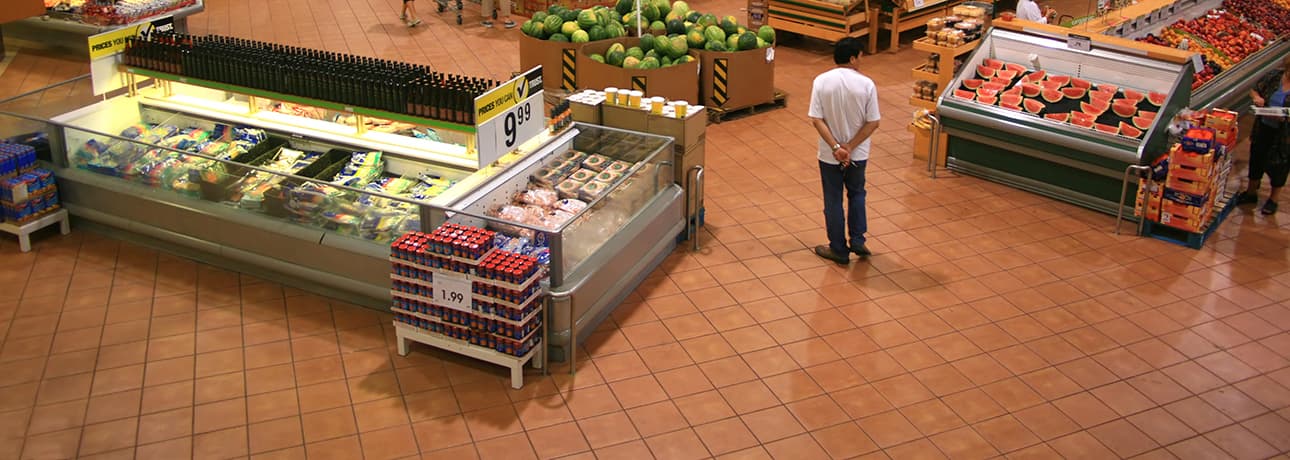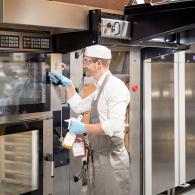Many retailers understand that floor care is essential for impressing customers and reducing slip-and-fall incidents, but it also plays a role in maintaining food safety. Recent studies show that pathogens such as Listeria, can contaminate retail floors and also colonize on surfaces, especially if there is water or soil present. From 2014-2018, there were 12 multi-state outbreaks of Listeria, resulting in 24 deaths in the U.S. – which no retailer wants to be associated with.
With the 2019 International Association for Food Protection (IAFP) Annual Meeting approaching July 21-24, it’s an ideal time to recap best practices for preventing the spread of Listeria:
- Create a regular schedule for cleaning floors. Create a floor care schedule to ensure floors and floor drains throughout the store are cleaned consistently. Mop during the rainy and winter seasons to remove snow and mud that is tracked inside. Deep clean walk-in freezer and refrigerator floors as needed.
- Select the best method for cleaning retail floors. Staff should steer away from using machines and high-pressure sprays in areas where food is prepared and served to avoid creating aerosols which can land on food contact surfaces. Instead, look for a bacteria-enhanced and no-rinse liquid floor cleaner that is effective at removing soils, fats, greases and oils and their odors. The bacteria continue cleaning even after mopping is complete. For other areas throughout the store, consider using floor care machines, such as auto scrubbers, which are effective at removing dirt, debris, water and other soils from floors.
- Maintain cleaning equipment. Tools used for floor care can become sources of contamination if they are not cleaned properly. This includes mops, buckets, squeegees and machines. Tools should be cleaned after each use with a fresh solution of the cleaner that was used on the floor, then rinsed with fresh water, sanitized and stored in such a way that they dry as soon as possible. Mops should not be stored in buckets of cleaner or sanitizer.
- Conduct employee training. There is a high turnover rate in retail settings, so continual training is vital. Training should focus on educating employees to use the proper products and tools for each area of the store and to adhere to proper dilution ratios. Following the manufacturers’ instructions is critical because improper usage of product is wasteful and costly, and the wrong combination of chemicals can have negative results. Finally, make cleaning tasks as easy as possible for employees to avoid them neglecting their responsibilities.
- Pay attention to high-traffic and often overlooked areas. Cleaning staff should give extra attention to high-traffic areas, high-soil load areas, such as meat rooms, and areas that tend to get wet, such as around sinks. Grout in disrepair and cracked tiles can harbor microorganisms and are more difficult to clean. Thus, floor maintenance should be incorporated into a floor care schedule to ensure that high-traffic areas or places where moisture gathers remain in shape over time.
There is a potential for cross contamination to occur if floors are not properly maintained and cleaned. Listeria is an especially harmful bacteria that, if ingested, can result in unpleasant illness and even death. Fortunately, floor care best practices can reduce the spread of bacteria and help retailers maintain high food safety standards and customer safety and satisfaction.
To learn more about floor care solutions from Diversey that support your retail business, visit www.diversey.com/solutions/floor-care or reach out to us at contact.us@diversey.com.






